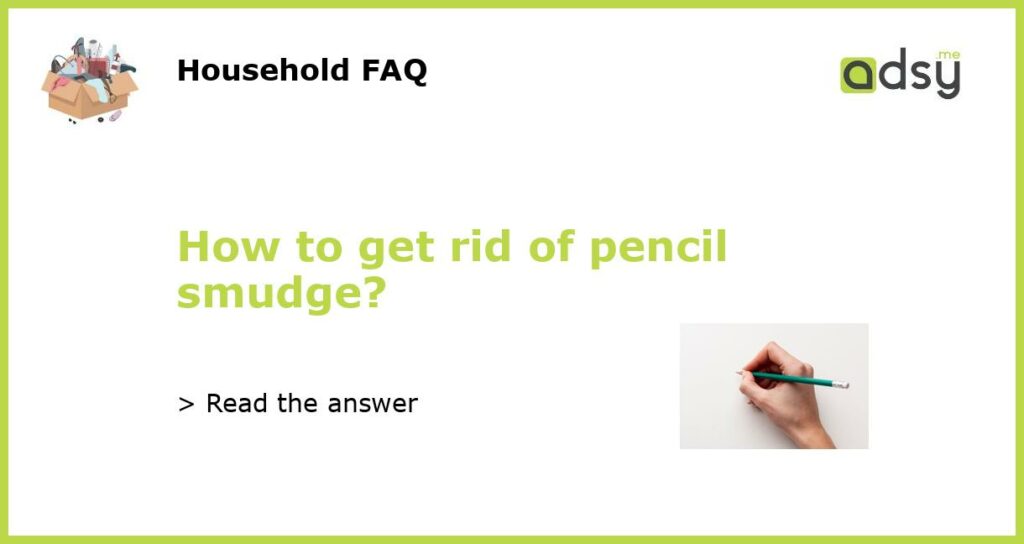Why does pencil smudge?
Pencil smudging occurs when graphite from the pencil comes into contact with the oils on your skin. When you write or draw with a pencil, the friction between the pencil lead and the paper causes the graphite to transfer onto the paper, leaving a mark. If you accidentally touch the graphite mark or rub it with your hand, the oils on your skin can cause the graphite to smudge.
The importance of a smudge-free finish
Smudging can ruin the appearance of your artwork or written work. It can make your writing or drawing look messy and unprofessional. Additionally, smudging can make it difficult to erase or correct mistakes, as the graphite will spread and become more difficult to remove. It is important to take steps to prevent pencil smudging to ensure a clean and precise finish to your work.
Tips to prevent pencil smudging
Here are some tips to help you prevent pencil smudging:
- Hold the pencil properly: Hold the pencil slightly higher up from the tip, allowing less contact between your hand and the paper. This can help to minimize smudging.
- Use a smudge guard: A smudge guard is a specialized glove or covering that covers the part of your hand that rests on the paper while writing or drawing. It acts as a barrier, preventing the oils from your skin from smudging the graphite.
- Apply a fixative: If you are working on a piece of artwork, you can apply a fixative spray over the pencil marks. This helps to seal the graphite and prevent smudging.
- Choose the right paper: Some types of paper are more prone to smudging than others. Look for papers with a smooth surface that are specifically designed for pencil work. These papers are often labeled as “smudge-resistant” or “anti-smudge.”
- Erase with caution: When erasing pencil marks, be gentle to minimize smudging. Use a high-quality eraser and avoid rubbing the paper aggressively.
How to remove pencil smudge
If you do find yourself with a pencil smudge, there are several methods you can try to remove it:
- Eraser: The most common method is to use an eraser to gently rub away the smudge. Make sure to use a clean, soft eraser and apply light pressure. If the smudge is stubborn, try using a kneaded eraser, which can be molded to a point for precise erasing.
- Pencil eraser: If the pencil smudge is light, you can also try using another pencil eraser to remove it. Simply rub the pencil eraser over the smudge using light circular motions.
- White vinyl eraser: A white vinyl eraser, often used for artwork, can also be effective in removing pencil smudges. Gently rub the eraser over the smudge until it disappears.
- Isopropyl alcohol: If the above methods do not work, you can try using a cotton swab dipped in isopropyl alcohol to remove the smudge. Dab the cotton swab on the smudged area, being careful not to soak the paper. Then, gently blot the area with a clean cloth.
Preventing smudges in the future
Once you have successfully removed a pencil smudge, take steps to prevent future smudging:
- Allow time for the graphite to dry: Give your pencil work some time to dry before touching or handling it. This can minimize the chances of smudging when you move the paper.
- Use a fixative: If you are working on artwork, consider applying a fixative spray over your finished piece. This can help to seal the graphite and prevent smudging.
- Store your work properly: After completing your work, store it in a protective sleeve or folder to prevent smudging when it comes into contact with other surfaces.






